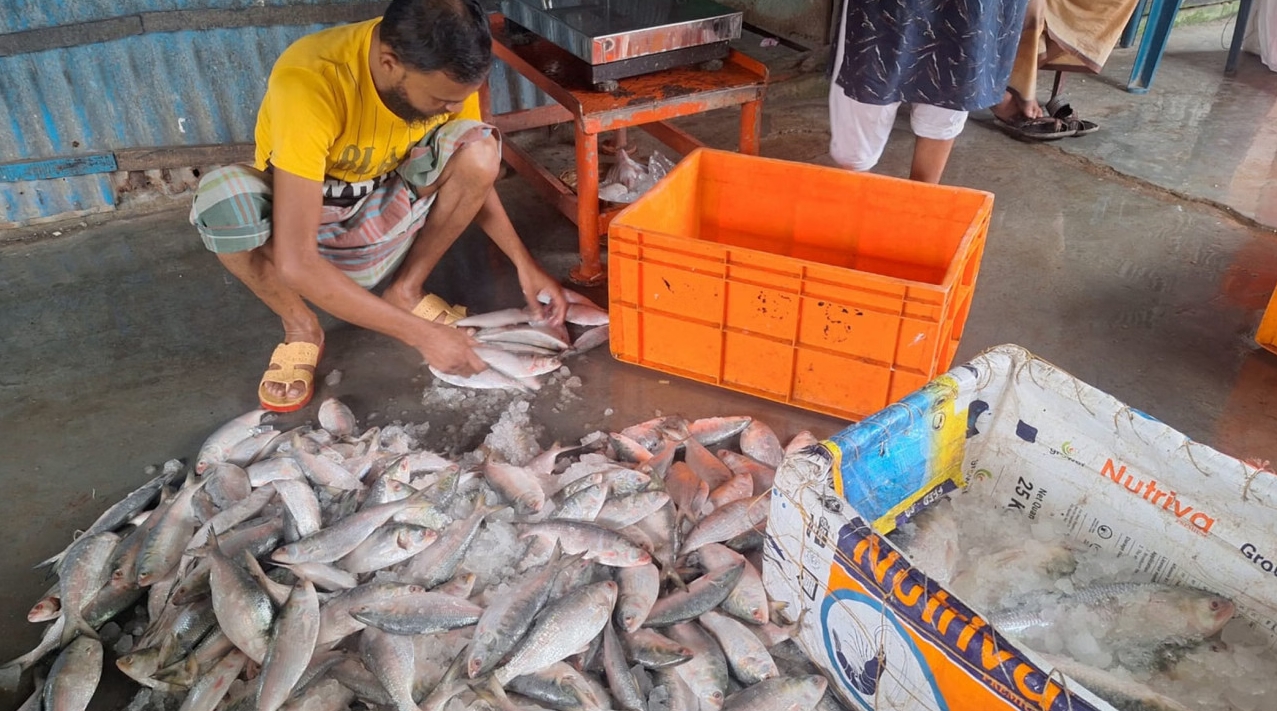Where are the big hilsa? They’re nowhere to be caught

- Update Time : 04:49:11 am, Saturday, 20 September 2025
- / 166 Time View

Large Hilsa Scarce in Southern Markets, Smaller Fish Dominate
Markets across southern Bangladesh are witnessing a sharp decline in the availability of large hilsa, with most of the current catch weighing between 200 and 400 grams, according to traders.
These smaller hilsa are being sold at Tk 400–600 per kilogram. The Barishal Divisional Fisheries Office reported that 60–65 percent of hilsa caught currently fall within this size range.
Fishermen noted that unlike previous years, when larger fish were more common at this stage of the season, this year’s catch is not only smaller in size but also lower in overall quantity.
The Divisional Fisheries Department highlighted that hilsa below 225 grams, known as jatka, are illegal to catch and sell. Yet, both jatka and slightly larger undersized hilsa are being openly sold in markets.
On a single day, around 567 tonnes of hilsa were delivered to 364 markets and landing points across the Barishal division, with 65 percent weighing between 200 and 400 grams.
At the Barishal Port Road wholesale landing centre, Md Shakil, manager of Arif Enterprise, said most of the supply consisted of small fish.
“A 300-gram hilsa that cost Tk 1,000 per kilogram two days ago now sells for Tk 1,060. Fish weighing 700–800 grams rose from Tk 1,960 to Tk 2,000 per kg, and one-kilo hilsa increased from Tk 2,210 to Tk 2,260. Around 60–70 percent of the catch consists of small fish, and overall supply is about half of last year’s,” he said.
Fisherman Siddik Majhi from Kuakata added that out of every five maunds of hilsa brought ashore, three maunds are small fish weighing 300–400 grams.
Traders attributed the scarcity of large hilsa to weak jatka protection efforts last year. “The monsoon should bring a better catch of large fish, but we haven’t seen it yet,” one trader noted.
Shariful Islam, manager of the BFDC fish centre in Alipur, said adverse weather has prevented many trawlers from going out to sea, reducing overall production. “Of the 30 maunds of fish we received yesterday, about 25 maunds were in the 300–400 gram range,” he added. Prices have surged, rising by Tk 5,000–10,000 per maund in recent days.
Currently, fish weighing 500–700 grams sell for around Tk 70,000 per maund, up from Tk 60,000–65,000. One-kilogram hilsa, previously priced at Tk 70,000–80,000 per maund, now fetches Tk 90,000.
Mohammad Anisuzzaman, senior assistant director of the Barishal fisheries department, warned that this year’s hilsa production is expected to be lower than last year. “We are seeing indications of a decline. Hilsa migration routes are changing due to navigability issues, river pollution, and climate change,” he said.
He added that larger hilsa are scarce, with around 65 percent of the catch weighing 200–450 grams. While catching and selling jatka remains illegal, monitoring the extensive river network is challenging. “Whenever we receive reports, we conduct enforcement drives with police. Authorities have been instructed to take stricter action against illegal jatka fishing and sales,” Anisuzzaman said.



















